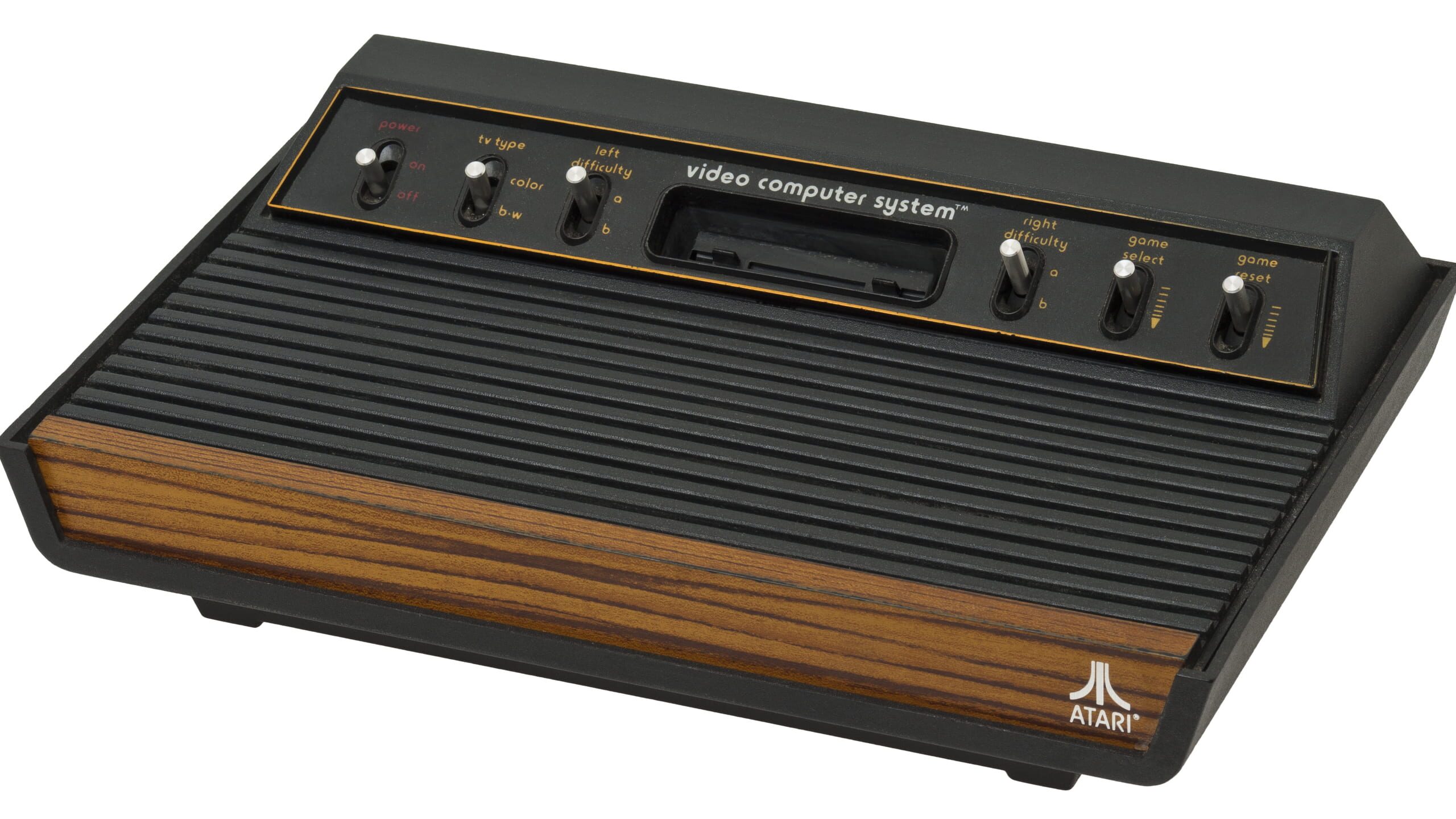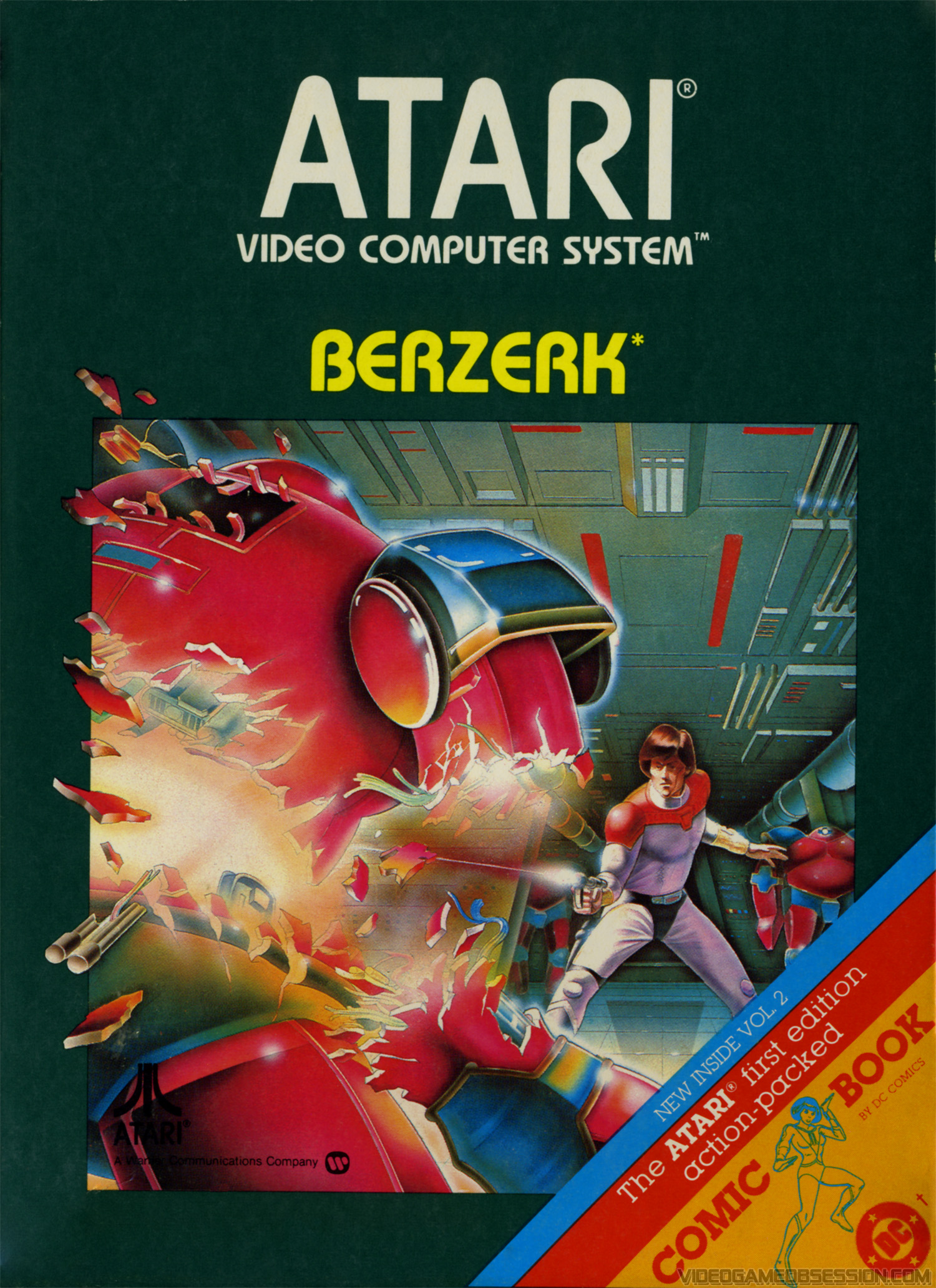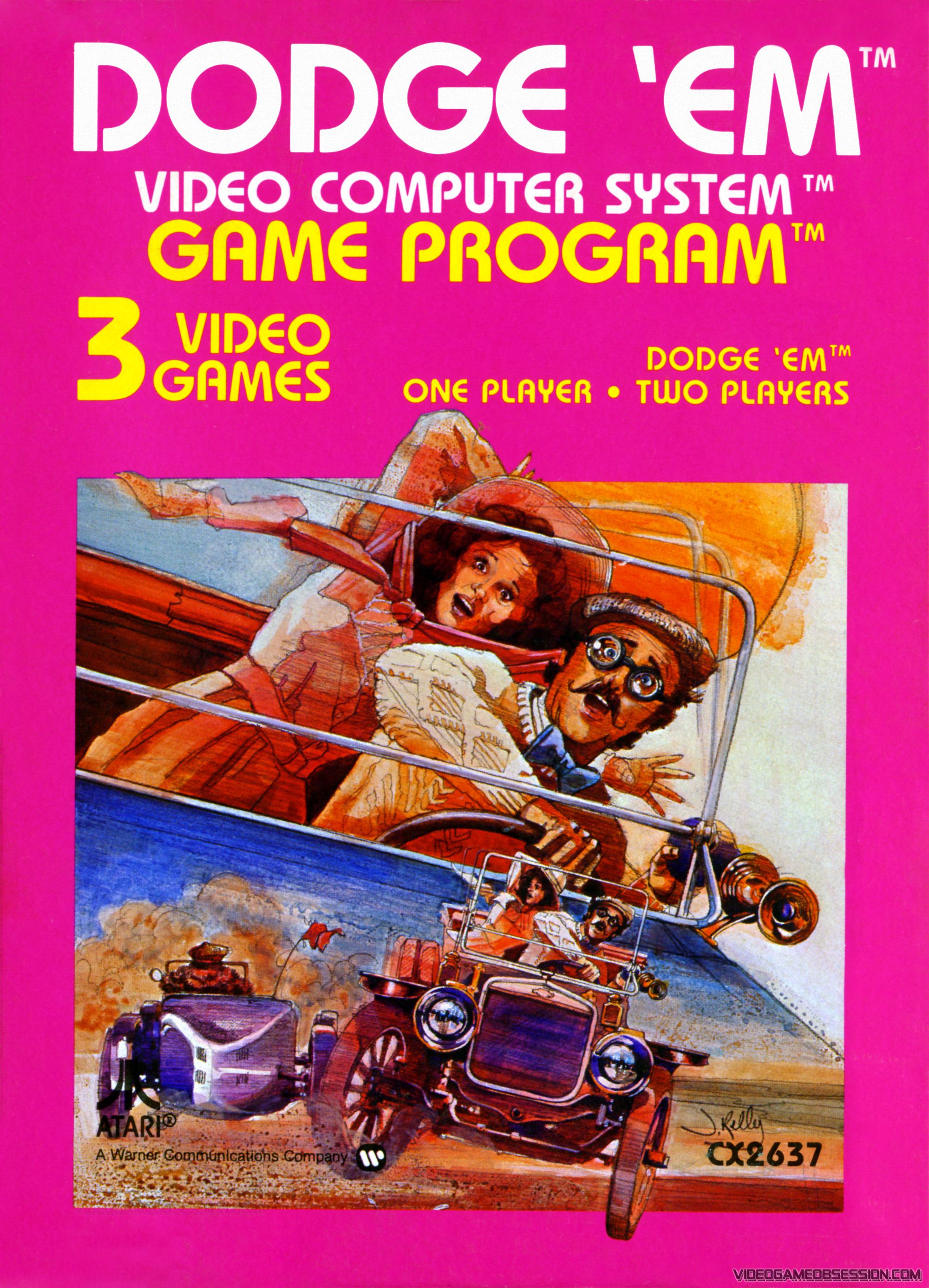Atari 2600: The Console That Revolutionized Gaming Forever
When people talk about the golden age of video games, there’s one name that always comes up: Atari 2600. This iconic console didn’t just change how we play games; it created an entire industry from scratch. Released in 1977, the Atari 2600 was more than just a piece of hardware—it was a cultural phenomenon that turned living rooms into gaming arenas. So, buckle up, my friend, because we’re diving deep into the history, impact, and legacy of this legendary machine.
Now, you might be wondering why the Atari 2600 deserves so much attention. Well, let me tell you, this wasn’t just another gaming device. It was the console that brought gaming out of arcades and into homes, making it accessible to everyone. Before the Atari 2600, gaming was mostly limited to those who could afford expensive arcade machines. But Atari changed all that, and it did so with style and innovation.
What makes the Atari 2600 even more fascinating is how it managed to survive—and thrive—despite its limitations. With only 128 bytes of RAM and a processor that would make today’s gamers laugh, it still delivered unforgettable experiences. And hey, don’t forget the joystick! That clunky, single-button controller became a symbol of early gaming culture. So, let’s get started on this wild ride through the world of Atari 2600.
- Movierulz Kannada 2025 Watch Safely Legal Alternatives More
- Rip Julio Foolio New Video Autopsy Details Emerge
Table of Contents
- The Birth of Atari 2600
- Hardware Specifications That Made It Tick
- Iconic Games That Defined the Era
- Cultural Impact and Legacy
- The Challenges Atari Faced
- Market Performance and Sales Figures
- Competitors and Rivals
- Technological Innovations
- Collectibles and Modern-Day Value
- The Future of Retro Gaming
The Birth of Atari 2600
From Idea to Icon
Let’s rewind to the late 1970s, a time when home gaming was still in its infancy. Atari, founded by Nolan Bushnell and Ted Dabney, was already making waves with arcade hits like Pong. But they wanted more. They wanted to bring the arcade experience directly into people’s homes. Enter the Atari 2600, originally known as the Atari Video Computer System (VCS). Launched in 1977, it wasn’t an overnight success. In fact, it took a little while for people to realize just how revolutionary this thing was.
At first, the Atari 2600 struggled to compete with other home consoles like the Fairchild Channel F. But then something amazing happened: Space Invaders came along. When Atari secured the rights to port this arcade classic to their console, sales skyrocketed. Suddenly, everyone wanted an Atari 2600, and the rest, as they say, is history.
Hardware Specifications That Made It Tick
Alright, let’s talk specs. The Atari 2600 wasn’t exactly a powerhouse by today’s standards, but back in the day, it was cutting-edge. Powered by a MOS Technology 6507 processor running at 1.19 MHz, it had a whopping 128 bytes of RAM. Yeah, you read that right—128 bytes. To put that into perspective, your average smartphone today has millions of times more processing power. But here’s the thing: the Atari 2600 didn’t need fancy hardware to deliver great games. It relied on creativity and ingenuity.
- Ximena Saenz Leaks The Privacy Scandal Ethical Debate
- Vegamovies Stream Bollywood Hollywood More Free Guide
One of the most interesting aspects of the Atari 2600’s hardware was its graphics chip, the Television Interface Adapter (TIA). This little marvel allowed developers to create colorful, dynamic visuals despite the console’s limited resources. And let’s not forget the famous joystick. While it may seem primitive now, it was a game-changer back then, offering precise control for its time.
Iconic Games That Defined the Era
Space Invaders: The Game That Saved Atari
Space Invaders is often credited with saving the Atari 2600 from obscurity. When Atari acquired the rights to port this arcade classic, it became the console’s killer app. Suddenly, people realized that they could enjoy arcade-quality games in the comfort of their own homes. Space Invaders wasn’t just a game; it was a cultural phenomenon that helped establish the Atari 2600 as the go-to console for gamers.
But Space Invaders wasn’t the only game that made the Atari 2600 famous. Titles like Pac-Man, Pitfall!, and Asteroids became staples of early gaming culture. These games weren’t just fun; they were innovative, pushing the boundaries of what was possible on such limited hardware. And let’s not forget the infamous E.T. the Extra-Terrestrial, a game so bad it’s now a legend in its own right.
Cultural Impact and Legacy
The Atari 2600 didn’t just change gaming; it changed culture. It introduced millions of people to the world of video games, turning them into a mainstream form of entertainment. Before the Atari 2600, gaming was seen as a niche hobby for geeks and nerds. But thanks to its widespread adoption, gaming became a part of everyday life.
And let’s not forget the impact it had on the industry itself. The Atari 2600 paved the way for future consoles, setting the standard for home gaming. Its success proved that there was a market for home consoles, leading to the development of more advanced systems like the Nintendo Entertainment System (NES) and Sega Genesis. Without the Atari 2600, the gaming industry as we know it today might not exist.
The Challenges Atari Faced
Of course, the road to success wasn’t without its bumps. Atari faced numerous challenges during its rise to dominance. One of the biggest issues was quality control. As third-party developers flooded the market with games, many of them were rushed and poorly made. This led to a glut of bad games, which ultimately contributed to the video game crash of 1983.
Another challenge was competition. While the Atari 2600 was the dominant console of its time, it wasn’t without rivals. Companies like Mattel and Coleco were also vying for a piece of the home gaming pie. Despite these challenges, Atari managed to stay ahead of the curve, thanks to its innovative approach and strong brand identity.
Market Performance and Sales Figures
So, how did the Atari 2600 perform in the market? Pretty darn well, actually. By the time it was discontinued in 1992, the console had sold over 30 million units worldwide. That’s an impressive number, especially considering the limitations of the time. And let’s not forget the games. Over 400 titles were released for the Atari 2600, many of which became bestsellers.
But the real measure of success isn’t just in sales figures; it’s in the impact it had on the industry. The Atari 2600 proved that there was a market for home consoles, leading to the development of more advanced systems. It also established the concept of third-party game development, paving the way for companies like Nintendo and Sega to thrive.
Competitors and Rivals
Who Was Atari Up Against?
While the Atari 2600 was the king of the hill, it wasn’t without competition. Companies like Mattel and Coleco were also trying to make a name for themselves in the home gaming market. Mattel’s Intellivision was one of Atari’s main rivals, offering more advanced graphics and a wider range of games. Coleco’s Colecovision was another strong competitor, featuring arcade-perfect ports of popular games.
Despite the competition, Atari managed to maintain its dominance. Its strong brand identity and wide range of games helped it stay ahead of the curve. But the real challenge came from within the industry itself. The video game crash of 1983 hit Atari hard, forcing the company to reevaluate its strategy. While it eventually recovered, the damage had been done, and the golden age of Atari was over.
Technological Innovations
One of the reasons the Atari 2600 was so successful was its innovative approach to technology. Despite its limited hardware, it managed to deliver experiences that were both fun and engaging. The Television Interface Adapter (TIA) was a groundbreaking piece of technology that allowed developers to create colorful, dynamic visuals. And let’s not forget the joystick. While it may seem primitive now, it was a game-changer back then, offering precise control for its time.
Another area where Atari innovated was in game design. Titles like Pitfall! and Adventure pushed the boundaries of what was possible on such limited hardware. These games weren’t just fun; they were innovative, paving the way for future developments in the industry.
Collectibles and Modern-Day Value
Today, the Atari 2600 is more than just a piece of gaming history; it’s a collectible. Original consoles and games are highly sought after by collectors, with rare titles like Air Raid and the infamous E.T. the Extra-Terrestrial fetching high prices at auction. And let’s not forget the cartridges themselves. Many of them are now considered works of art, with beautiful box art and unique designs.
But the value of the Atari 2600 goes beyond just its collectible status. It’s a symbol of a bygone era, a time when gaming was simple yet magical. For many people, owning an Atari 2600 is like owning a piece of their childhood, a reminder of simpler times when gaming was about fun and creativity.
The Future of Retro Gaming
So, what does the future hold for retro gaming? Well, it’s looking pretty bright. With the rise of emulation and digital downloads, classic games are more accessible than ever. Consoles like the NES Classic and SNES Classic have brought retro gaming to a new generation, introducing them to the classics of yesteryear.
And let’s not forget the Atari itself. While the original console may be long gone, its legacy lives on in the hearts and minds of gamers everywhere. Whether through emulation, collectibles, or simply nostalgia, the Atari 2600 continues to inspire and entertain, proving that some things truly are timeless.
Kesimpulan
Well, there you have it—the story of the Atari 2600 in all its glory. From its humble beginnings to its status as a cultural icon, this console has left an indelible mark on the gaming industry. It proved that gaming could be more than just a niche hobby; it could be a mainstream form of entertainment enjoyed by millions.
So, what can we learn from the Atari 2600? For starters, it shows us that innovation doesn’t always require cutting-edge technology. Sometimes, all you need is creativity and a willingness to take risks. And hey, if you’re a fan of retro gaming, why not grab an Atari 2600 and relive the magic for yourself? Trust me, it’s worth it.
Before you go, why not leave a comment or share this article with your friends? And if you’re in the mood for more gaming goodness, check out some of our other articles. Who knows? You might just discover your next favorite topic!



Detail Author:
- Name : Lenna Dooley
- Username : imelda.runte
- Email : manley.daugherty@gmail.com
- Birthdate : 1996-07-03
- Address : 74474 Orion Trail Apt. 004 Bergstromfort, NJ 70338
- Phone : (534) 257-2473
- Company : Carroll, Oberbrunner and Breitenberg
- Job : Trainer
- Bio : Qui sed possimus magni placeat laborum. Labore est voluptatem eum rerum nisi sit reiciendis.
Socials
instagram:
- url : https://instagram.com/walter2013
- username : walter2013
- bio : Ut ut aut placeat. Sit autem dolor et non. Unde quas quis at et rerum.
- followers : 2874
- following : 1366
tiktok:
- url : https://tiktok.com/@genewalter
- username : genewalter
- bio : Dolores non quod qui. Autem id exercitationem blanditiis voluptas ut ad.
- followers : 5578
- following : 1372
linkedin:
- url : https://linkedin.com/in/walterg
- username : walterg
- bio : Cum esse exercitationem sint rerum.
- followers : 1254
- following : 95
twitter:
- url : https://twitter.com/genewalter
- username : genewalter
- bio : Fuga minima mollitia et nam et. Consectetur ea ipsa beatae numquam et accusamus facilis vero. Itaque quo quis iure aut possimus.
- followers : 3713
- following : 1825